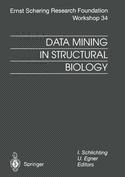Data Mining in Structural Biology, Softcover reprint of the original 1st ed. 2001 Signal Transduction and Beyond Ernst Schering Foundation Symposium Proceedings Series, Vol. 34
Langue : Anglais
Coordonnateurs : Schlichting I., Egner U.

Structural biology is becoming a routine technique for structure de termination in pharmaceutical industries. The advances in molecular biology, crystal handling and data collection techniques, tunable syn chrotron radiation sources, and high-performance computing have all contributed to developments such as the production and expression of tailored protein domains, the use of the MAD (Multiple Anomalous Dispersion) method, and the collection of X-ray data from tiny crystals at cryogenic temperature. The number of protein structures deposited in the Protein Databank has increased tremendously over the last 3-4 years. Since 1997, more than 1,500 structures have been deposited each year, and during the first 7 months of this year, 1,500 protein structures were already deposited. The numerous initiatives in the field of "structural genomics" distributed all over the world have led to the development of techniques for high-throughput structure determina tion, thereby contributing to the increase in the determination of three dimensional protein structures. This structural information is being ex plored in various ways in the drug discovery process. It is not only used in structure-based drug design of new low-molecular-weight li gands, but also in the early stages of target validation and assessment. With the number of protein sequences without significant homology to well-known proteins increasing, the technique of structure-sequence compatibility (threading) is increasingly used to assign a function to a given protein fold.
C.-H. Heldin: Regulation of Kinases by Growth Factors; E.A. Nigg: Cell Cycle Regulation by Protein Kinases and Phosphatases; L. Johnson: Structural Basis of Substrate Recognition and Control by Protein Kinases; A. Levitzki: The Selectivity of Small Molecules Towards Protein Tyrosine Kinases; H.H. Grunicke et al:Elements of Signal Transduction in Drug Discovery with Special Reference to Inhibitors of Protein Kinase C; U. Heinemann: The Berlin 'Protein Structure Factory' Initiative: A Technology-Based Approach to Structural Genomics; F.K.Winkler et al.: Structure-Based Approaches in Modern Drug Discovery Research; C.W. Müller: DNA Recognition by NFkB and STAT Transcription Factors; J.-M. Wurtz, D. Moras: Molecular Determinants for Agonists and Antagonist Binding to Steroid Nuclear Receptors;J.D. Norris et al.: Estrogen Receptor-Cofactor Interactions as Target for Novel Drug Discovery;
Date de parution : 04-2014
Ouvrage de 209 p.
14.8x21 cm
Disponible chez l'éditeur (délai d'approvisionnement : 15 jours).
Prix indicatif 105,49 €
Ajouter au panierThèmes de Data Mining in Structural Biology :
© 2024 LAVOISIER S.A.S.



